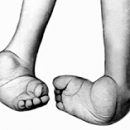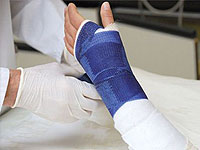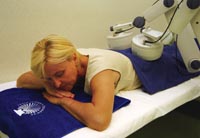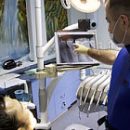Walked, slipped, fell - as a result, bruised, dislocation or, worse, fracture. A faithful sign of an unsuccessful landing - pain. After the fall, it appears immediately, in addition to it - other symptoms that allow you to determine how serious injury is.
Content
- Ears — bruises, yes not only
- Tensions of ligaments
- Dislocation joints
- And if the fracture?
- Spinal fracture when falling
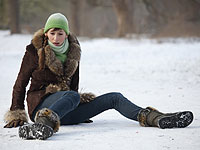 In winter, all of us can be called extremes. Being well-aware of the termination of municipal services, we are the case and the case will run on icy sidewalks in the hope of catching up public transport. At the same time, we are quite aware of the fact that our actions are at least useless and how much is dangerous for health due to the possibility of bruises of soft tissues, stretching, breaks of bundles and, of course, bone fractures.
In winter, all of us can be called extremes. Being well-aware of the termination of municipal services, we are the case and the case will run on icy sidewalks in the hope of catching up public transport. At the same time, we are quite aware of the fact that our actions are at least useless and how much is dangerous for health due to the possibility of bruises of soft tissues, stretching, breaks of bundles and, of course, bone fractures.
Once, slipping and being on the ground in the Lying position, we begin to think hard enough, which are specifically caused by pain after falling. It would seem that all injuries hurt the same way, but not there was something: there are some distinctive features, allowing to judge the degree of damage.
Ears — bruises, yes not only
At first glance, bruises seem harmless, which is generally right if we are talking about the bruises of soft tissues, that is, the skin and subcutaneous fiber. Pain occurs immediately after the fall and can be significant, but after a few hours it subsides. It is accompanied by an increasing swelling, hematoma (or simply bruised) and a minor violation of the limb function while maintaining passive movements, that is, an extraneous person may freely bend the damaged limb of the victim.
Fresh bruising looks at the beginning of the Baghrov, after 3–4 days shine, after 5–6 days acquires green tint, then yellow and gradually disappears.
To alleviate pain when injured, it is enough to cover the patient with a cloth and attach a piece of people or snow to it, fixing it with another piece of fabric or clothing. Prevent a strong swelling will help the gulling bandage and sublimated limb position. No need for medical care. Exceptions are injuries of the head, which may be accompanied by a concise brain, as evidenced by the loss of consciousness, the lack of memories of the injury itself, headache, noise in the ears, violation of sight — In this case, you need to contact the trauma.
Tensions of ligaments
Tensions of joint ligaments typically occur when driving superior to the physiological possibilities of articulation, or when driving in unusual for joint. Most often, stretching bonds of an ankle occurs when the foot is converted or stretching the ligaments of the ray-tank joint when the hand is falling on the straightened arm.
Pain after falling resemble bruise, but swelling in the joint area, hematoma and the violation of the function of the joint are largely pronounced. If passive movements in the joint and geometry of limbs are preserved, the pressure on the bone along the axis of the limb does not cause a sharp pain, it is enough to apply an anesthetic drug in the form of a gel or cream on the skin, impose a gulling bandage, attach to the patient a cold place and keep full peace.
Dislocation joints
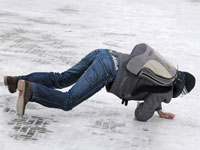 The dislocations of the joints are injuries in which the joint surfaces of the articulation of the bones relative to each other occurs. At the same time, the joint capsule and bundles fixing it. When the hand falls on the hand, the rayless or shoulder joint is most often dislocated, when the foot is sewn — ankle, less often there are dislocations of hip joints.
The dislocations of the joints are injuries in which the joint surfaces of the articulation of the bones relative to each other occurs. At the same time, the joint capsule and bundles fixing it. When the hand falls on the hand, the rayless or shoulder joint is most often dislocated, when the foot is sewn — ankle, less often there are dislocations of hip joints.
Signs of dislocation — Pain after falling, sharply amplified when trying to move in the joint, violation of the joint geometry, blocking both active and passive movements in the limb.
Revision management — medical procedure, so you do not need to try to force the limbs to normally, it is fraught with injuries of blood vessels and nerve fibers, besides, no one can give guarantees that, along with dislocation, the injury has not led to the fibrum.
Pain after falling in case of dislocation can be facilitated by attaching to the joint cold and immobilizing the limb in the position she took after injury. Additionally, you can take an anesthetic drug and, without losing time, go to the nearest trauma.
And if the fracture?
The fracture of doctors call injuries accompanied by violation of the integrity of bones. Fractures can be open, in this case the bone breaks the skin and comes out, and closed when the skin is not damaged.
Pain after falling when bone fractures occurs instantly, it can be so strong that sometimes the victim loses consciousness. Any attempt to move the limb causes a sharp strengthening of pain, so you do not need to try to undress the victim to inspect the injured limb — It will be done in the hospital. Task eyewitnesses injury if there are signs of fracture — call «ambulance».
Signs of fracture:
- sharp pain, increasing at the slightest movements,
- Changing the shape of the limb,
- Eveniness and bruises in the fracture zone,
- Shortening limb,
- Abnormal immobility of limbs and bones.
While the ambulance is driving, the victim need to give an anesthetic drug and girlfriend, using boards, cardboard, folded in several layers of magazines, blankets, towels, ensure a still position of the injured limb. Sometimes it can be enough to feed the hand to the body or chest or one leg to another — The main thing is that the improvised tire reliably fixed the limb in two joints, above and below the fracture area.
Spinal fracture when falling
Fracture of the spine — Very severe injury accompanied by the appearance of pain in the damaged area, disappearance of sensitivity and paralysis of the legs. If, after falling the victim, these symptoms appeared, it is better not to touch it at all, and leave to lie on the place where he fell, while ensuring additional safety. If there is a situation in which the injured person has to be delivered to the medical institution on their own, then it is necessary to do on the shield or in the position lying on the stomach. If the injury arose in the cervical department, then the victim left to lie on the back, gently laying him under the neck. Anesthetics will help reduce pain.


